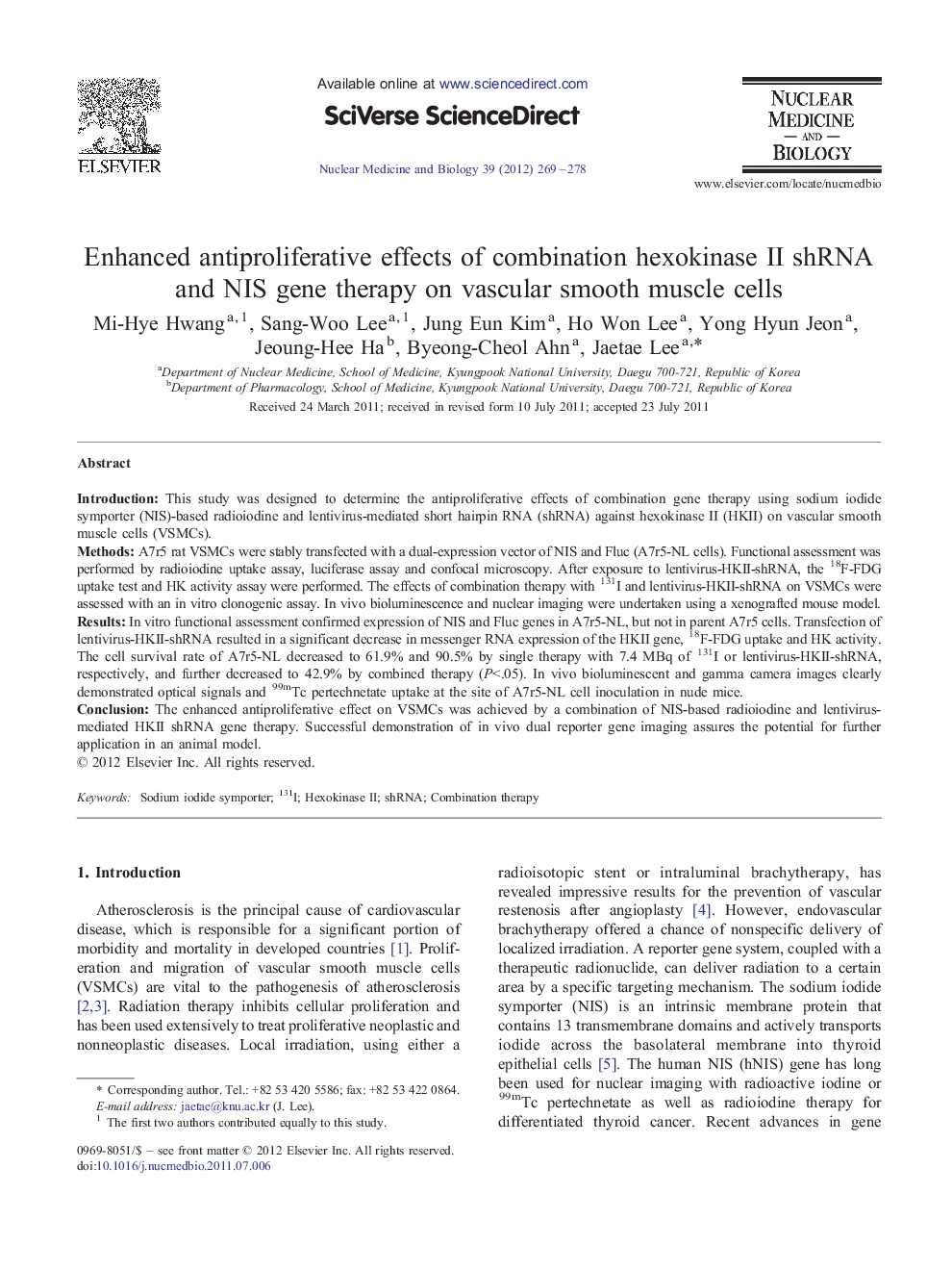| کد مقاله | کد نشریه | سال انتشار | مقاله انگلیسی | نسخه تمام متن |
|---|---|---|---|---|
| 2153982 | 1090215 | 2012 | 10 صفحه PDF | دانلود رایگان |

IntroductionThis study was designed to determine the antiproliferative effects of combination gene therapy using sodium iodide symporter (NIS)-based radioiodine and lentivirus-mediated short hairpin RNA (shRNA) against hexokinase II (HKII) on vascular smooth muscle cells (VSMCs).MethodsA7r5 rat VSMCs were stably transfected with a dual-expression vector of NIS and Fluc (A7r5-NL cells). Functional assessment was performed by radioiodine uptake assay, luciferase assay and confocal microscopy. After exposure to lentivirus-HKII-shRNA, the 18F-FDG uptake test and HK activity assay were performed. The effects of combination therapy with 131I and lentivirus-HKII-shRNA on VSMCs were assessed with an in vitro clonogenic assay. In vivo bioluminescence and nuclear imaging were undertaken using a xenografted mouse model.ResultsIn vitro functional assessment confirmed expression of NIS and Fluc genes in A7r5-NL, but not in parent A7r5 cells. Transfection of lentivirus-HKII-shRNA resulted in a significant decrease in messenger RNA expression of the HKII gene, 18F-FDG uptake and HK activity. The cell survival rate of A7r5-NL decreased to 61.9% and 90.5% by single therapy with 7.4 MBq of 131I or lentivirus-HKII-shRNA, respectively, and further decreased to 42.9% by combined therapy (P<.05). In vivo bioluminescent and gamma camera images clearly demonstrated optical signals and 99mTc pertechnetate uptake at the site of A7r5-NL cell inoculation in nude mice.ConclusionThe enhanced antiproliferative effect on VSMCs was achieved by a combination of NIS-based radioiodine and lentivirus-mediated HKII shRNA gene therapy. Successful demonstration of in vivo dual reporter gene imaging assures the potential for further application in an animal model.
Journal: Nuclear Medicine and Biology - Volume 39, Issue 2, February 2012, Pages 269–278